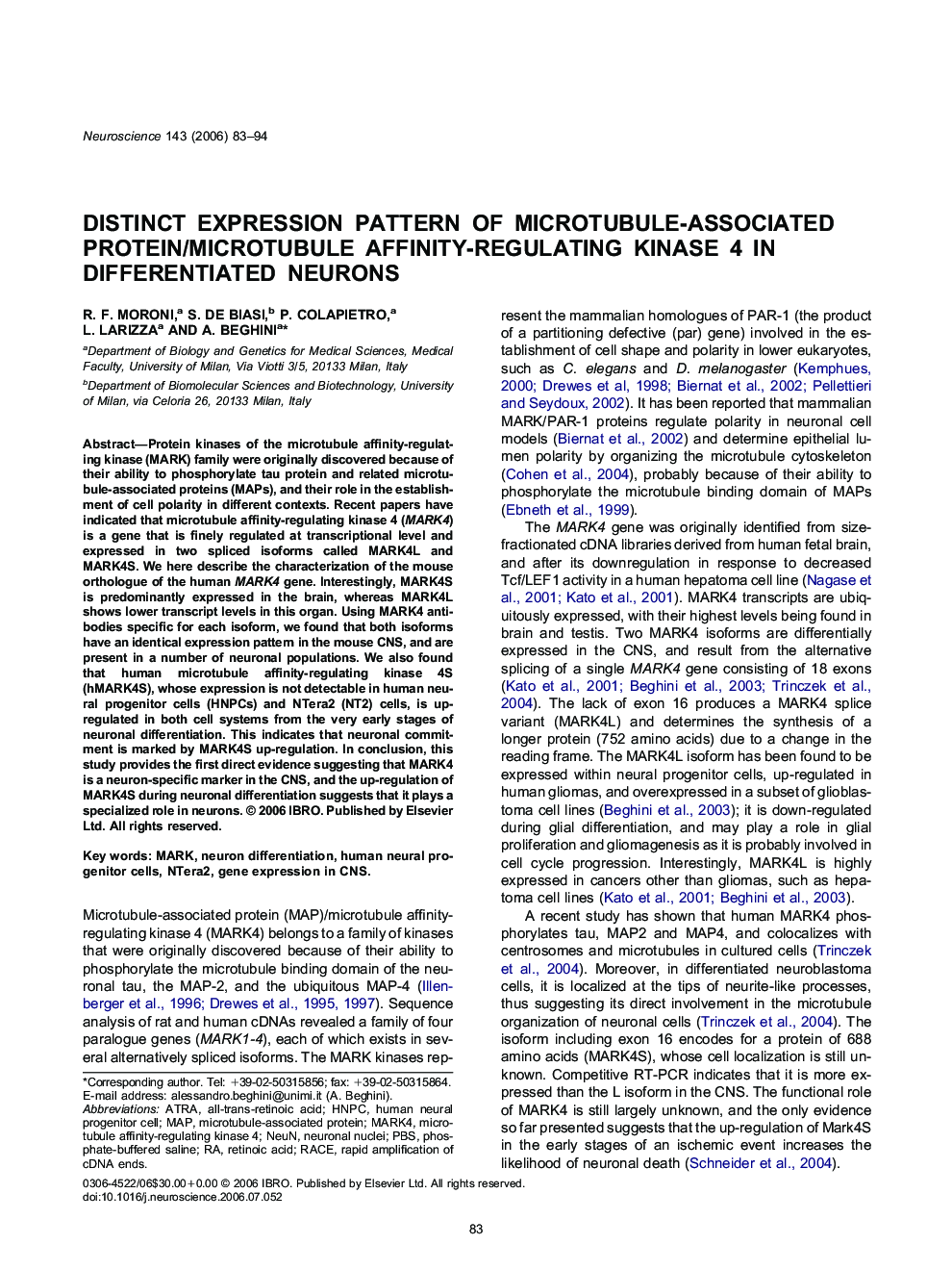| Article ID | Journal | Published Year | Pages | File Type |
|---|---|---|---|---|
| 4341415 | Neuroscience | 2006 | 12 Pages |
Abstract
Protein kinases of the microtubule affinity-regulating kinase (MARK) family were originally discovered because of their ability to phosphorylate tau protein and related microtubule-associated proteins (MAPs), and their role in the establishment of cell polarity in different contexts. Recent papers have indicated that microtubule affinity-regulating kinase 4 (MARK4) is a gene that is finely regulated at transcriptional level and expressed in two spliced isoforms called MARK4L and MARK4S. We here describe the characterization of the mouse orthologue of the human MARK4 gene. Interestingly, MARK4S is predominantly expressed in the brain, whereas MARK4L shows lower transcript levels in this organ. Using MARK4 antibodies specific for each isoform, we found that both isoforms have an identical expression pattern in the mouse CNS, and are present in a number of neuronal populations. We also found that human microtubule affinity-regulating kinase 4S (hMARK4S), whose expression is not detectable in human neural progenitor cells (HNPCs) and NTera2 (NT2) cells, is up-regulated in both cell systems from the very early stages of neuronal differentiation. This indicates that neuronal commitment is marked by MARK4S up-regulation. In conclusion, this study provides the first direct evidence suggesting that MARK4 is a neuron-specific marker in the CNS, and the up-regulation of MARK4S during neuronal differentiation suggests that it plays a specialized role in neurons.
Keywords
Related Topics
Life Sciences
Neuroscience
Neuroscience (General)
Authors
R.F. Moroni, S. De Biasi, P. Colapietro, L. Larizza, A. Beghini,
